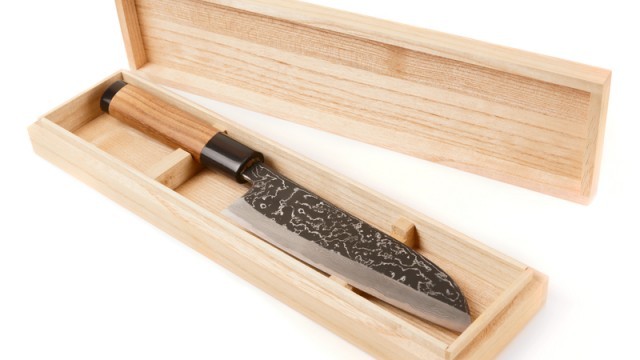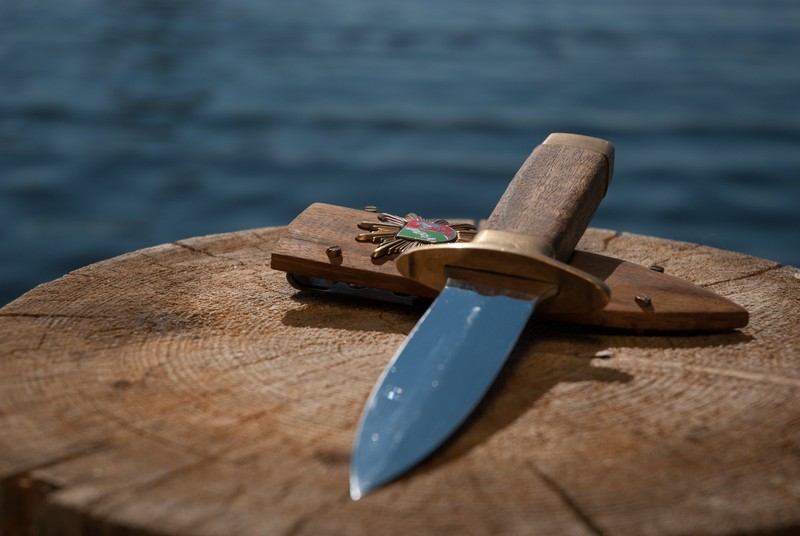Expensive knives are obviously higher quality, right? Nope, keep reading and learn why this isn't always the case.
Myth #2 – If my knife is more expensive, it is better quality
You may have noticed that there can be enormous price differences between one knife and the next. Though that price difference is sometimes an indication of higher quality, overall, it’s really not typically the case. Higher price does not often mean better knife quality.

Debunking the Myth:
Just like anything else you buy, an item is worth how much you're planning to spend on it. Even though a knife may be expensive does not dictate how it'll perform. In regards to finish and fit, you may think that expensive knives are made better, however, there is the occasion you'll find well-constructed knives being sold for half the cost. Learn how to recognize a well-constructed knife and do a lot of research before you invest a lot of money in a knife that may not last you very long.
Now that we've discovered the truth about this myth, you'll enjoy debunking the myth on the next page. Personally, I was surprised to find out this was a myth because it's something very common that people believe!

I agree with you on that. I carried my kabar in iraq, and put it through hell. I’ve had the blade bend but not break and it took a lot to accomplish that. Sog’s i have numerous break on me.
Clickbait
I make knives and this guy authoring this and most of y’all HAVE NO CLUE about what you are saying. Most cheap non stainless knives, like most Kabars, ESEE, and 1095 and 1075 knives will break before they bend. They are made from the same steel as lawn mower blades. I like lawn mower blades on lawn mowers but would never wear one in a sheath. Like files they can be properly tempered but the factories do not usually temper them properly. It is not hardness but proper tempering that seperates junk, like most Kabars and ESEEs, Beckers and so forth from quality blades. Some of the most ” life ” dependable blades are the cheaper brands like Mora and the Scandanavian brands that use a laminate steels. What about 85% of the mall ninjas think are good blades I wouldn’t carry to a weinie roast. Learn about steels before you offer an opinion. The 440 stainless blades of reputable manufacture are pretty unbeatable but so are other recipies if PROPERLY TEMPERED. Leave the hardness discussion to your prick but good blades properly tempered can be made from even grandpas broken files.
That was about the only thing he did get right. I have knives of just about all blade profiles, even sabre grind but to me I can adapt to blade profile but the proper temper is the true magic of blade science.
Dan Brown, is that rehandled, or a special edition, or what? The handle looks nice. I don’t usually care for Esee’s handle aesthetics, but I could go for something like that.
Tkc scales and grizzly out doors kydex sheath and thanks for asking
Dalton Mcdermott it’s been used a lot I have no clue what they used to coat the blade but it seems more durable than bedliner Esee also has a no questions warranty on all their products if you break it mail it to them and you get a new one no questions asked even if it was obviously intentional
Material has nothing to do with hardness? Um, the hardening process realigns the crystalline properties inherent in the material, so how can the basic material have no bearing on the hardness. Has this guy ever made a knife? He is a “collector” so I am assuming that means he watches the Knife Show and has a large collection of Frost and Ruko knives that just “look so cool.”
Kabars rock. Love Ontario knives as well.
Mack Proper temper is minuscule compared to proper hardening… For all your preaching about tempering as a knife maker, you seem to be forgetting the biggest concern is getting the carbon and carbides into solution and converting the austenite to martensite without causing grain growth or leaving yourself a bunch of left over austenite to worry about converting. Big grains and large amounts left over austenite from a bad heat treat aren’t fixed by tempering… While tempering can help the blades balance between toughness, wear resistance, and hardness; it’s a useless step if you didn’t properly anneal, stress relieve, and harden the steel first. Moreover before you go shooting your mouth off about “laminate steel” you should probably take a minute and google “San Mai steel or Damascus steel” it’s been used in knives way more often and for much longer than the steel from your pappy’s files…
On what planet are lawnmower blades made from 1095?!?! And when you’re referring to 440 do you mean 440A, 440B, or 440C?
I studied knife making under the best unknown knife maker in this country, Jim Mayes. In the late ’70s he wrote a book called ” How to Make Your Own Knives ” which to date has sold close to 100,000 copies. On Amazon today it lists for over $300.00 a copy in new condition. I studied under Jim for about 5 yrs and have expanded my knowledge and experience base well beyond his vast grasp on the totality of all things relating to blade science. 20 + years ago when I was training under Jim the 1065 to 1095 steels were not very well thought of as the basis for quality blades without out proper heat treating and tempering. Unlike older work hardened and tempered large circular and band saw blades lawn mower blades and leaf springs were the realm of hacks and Filipina knifemakers. The goomers who made fake Damascus outta cable were the only lower repute beaters than those already mentioned. I am now presently in the process of setting up a new shop on my own property and when I get it up and running I will be better able to address all knife making issues including major repairs.
The hardness of the blade is from that heat treat and not the type of steel the blade is made of. That’s just a load of bullshit. The composure of the steel has everything to do with its ability to achieve the desired heat treat, ie hardness.